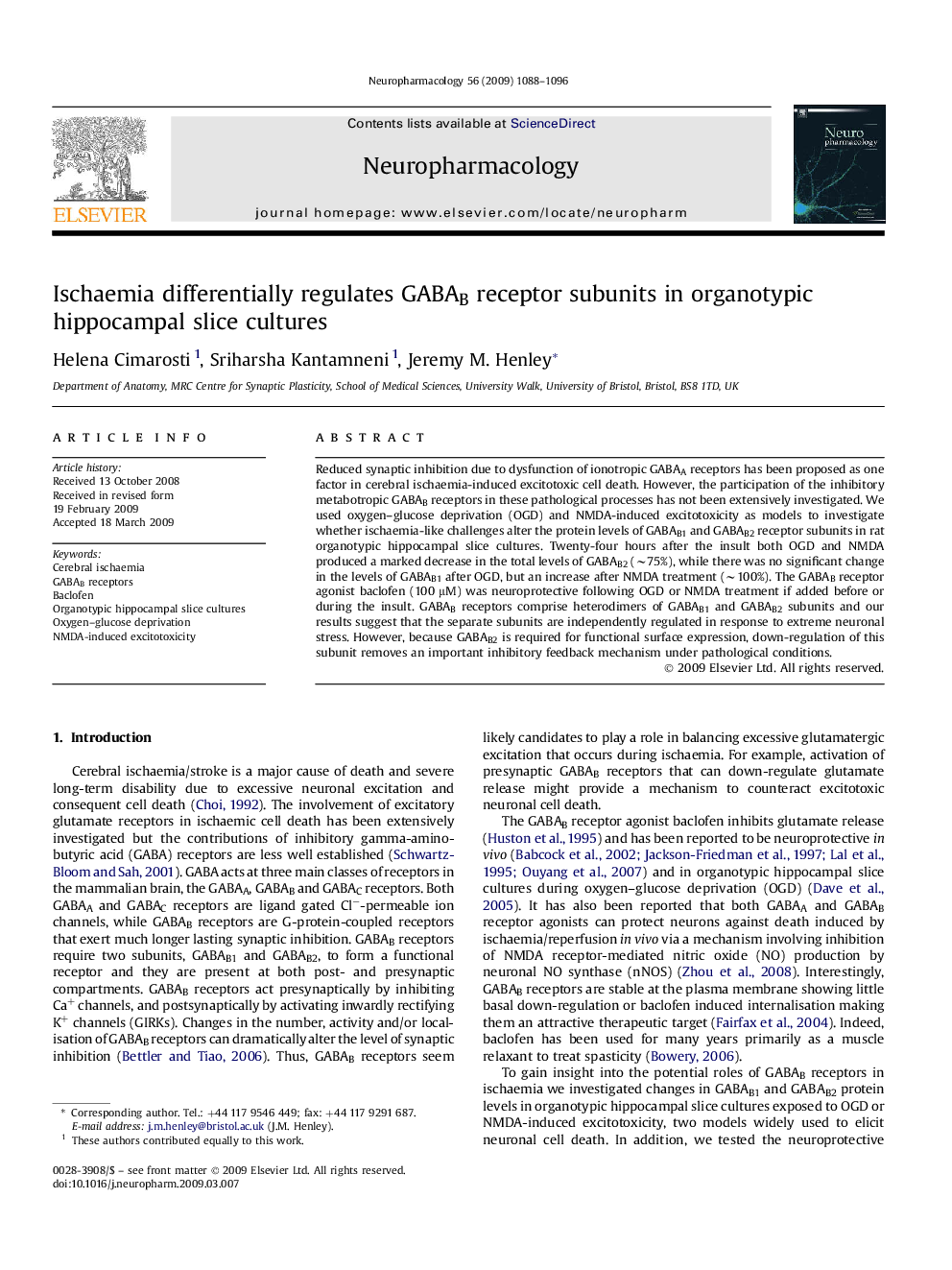| Article ID | Journal | Published Year | Pages | File Type |
|---|---|---|---|---|
| 2494368 | Neuropharmacology | 2009 | 9 Pages |
Reduced synaptic inhibition due to dysfunction of ionotropic GABAA receptors has been proposed as one factor in cerebral ischaemia-induced excitotoxic cell death. However, the participation of the inhibitory metabotropic GABAB receptors in these pathological processes has not been extensively investigated. We used oxygen–glucose deprivation (OGD) and NMDA-induced excitotoxicity as models to investigate whether ischaemia-like challenges alter the protein levels of GABAB1 and GABAB2 receptor subunits in rat organotypic hippocampal slice cultures. Twenty-four hours after the insult both OGD and NMDA produced a marked decrease in the total levels of GABAB2 (∼75%), while there was no significant change in the levels of GABAB1 after OGD, but an increase after NMDA treatment (∼100%). The GABAB receptor agonist baclofen (100 μM) was neuroprotective following OGD or NMDA treatment if added before or during the insult. GABAB receptors comprise heterodimers of GABAB1 and GABAB2 subunits and our results suggest that the separate subunits are independently regulated in response to extreme neuronal stress. However, because GABAB2 is required for functional surface expression, down-regulation of this subunit removes an important inhibitory feedback mechanism under pathological conditions.
